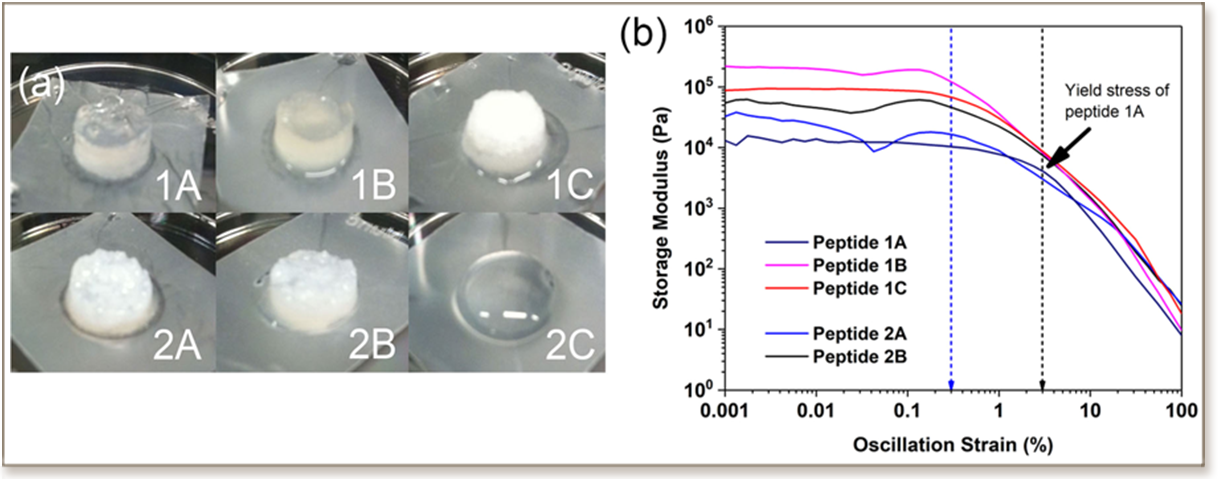
C-Terminal residue of ultrashort peptides impacts on molecular self-assembly, hydrogelation, and interaction with small-molecule drugs
K.H. Chan, W.H. Lee, M. Ni, Y. Loo & C.A.E. Hauser
Scientific Reports, Volume 8, Article number: 17127, 2018

Single molecular changes on a tripeptide can have dramatic effects on their self-assembly and hydrogelation. Herein, we explore C-terminal residue variation on two consistent ultrashort peptide backbones, i.e. acetylated-Leu-Ile-Val-Ala-Gly-Xaa and acetylated-Ile-Val-Xaa (Xaa = His, Arg, Asn). The objective of this study is to identify candidates that can form hydrogels for small-molecule drug (SMD) delivery. Haemolysis and cytotoxicity (with human adipose-derived mesenchymal stem cells) assays showed that the new soluble peptides (Xaa = His, Arg) are cytocompatible. Gelation studies showed that all but acetylated-Ile-Val-Arg could gel under physiological conditions. Longer peptidic backbones drive self-assembly more effectively as reflected in field emission scanning electron microscopy (FESEM) and circular dichroism spectroscopy studies. Rheological studies revealed that the resultant hydrogels have varying stiffness and yield stress, depending on the backbone and C-terminal residue. Visible spectroscopy-based elution studies with SMDs (naltrexone, methotrexate, doxorubicin) showed that besides the C-terminal residue, the shape of the SMD also determines the rate and extent of SMD elution. Based on the elution assays, infrared spectroscopy, and FESEM, we propose models for the peptide fibril-SMD interaction. Our findings highlight the importance of matching the molecular properties of the self-assembling peptide and SMD in order to achieve the desired SMD release profile.

"KAUST shall be a beacon for peace, hope and reconciliation, and shall serve the people of the Kingdom and the world."
King Abdullah bin Abdulaziz Al Saud, 1924 – 2015
Thuwal 23955-6900, Kingdom of Saudi Arabia
Al-Haytham Building (Bldg. 2)
© King Abdullah University of Science and Technology. All rights reserved